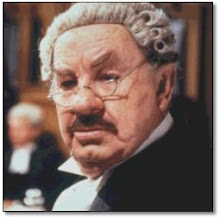
From the
Army Times:
-----------------------
The 3rd Infantry Division’s 1st Brigade Combat Team has spent 35 of the last 60 months in Iraq patrolling in full battle rattle, helping restore essential services and escorting supply convoys.
Now they’re training for the same mission — with a twist — at home.
Beginning Oct. 1 for 12 months, the 1st BCT will be under the day-to-day control of U.S. Army North, the Army service component of Northern Command, as an on-call federal response force for natural or manmade emergencies and disasters, including terrorist attacks...
this new mission marks the first time an active unit has been given a dedicated assignment to NorthCom, a joint command established in 2002 to provide command and control for federal homeland defense efforts and coordinate defense support of civil authorities.
After 1st BCT finishes its dwell-time mission, expectations are that another, as yet unnamed, active-duty brigade will take over and that the mission will be a permanent one.
“Right now, the response force requirement will be an enduring mission. How the [Defense Department] chooses to source that and whether or not they continue to assign them to NorthCom, that could change in the future,” said Army Col. Louis Vogler, chief of NorthCom future operations. “Now, the plan is to assign a force every year.”
... they’ll learn new skills, use some of the ones they acquired in the war zone and more than likely will not be shot at while doing any of it.
They may be called upon to help with civil unrest and crowd control or to deal with potentially horrific scenarios such as massive poisoning and chaos in response to a chemical, biological, radiological, nuclear or high-yield explosive, or CBRNE, attack.
Training for homeland scenarios has already begun at Fort Stewart and includes specialty tasks such as knowing how to use the “jaws of life” to extract a person from a mangled vehicle; extra medical training for a CBRNE incident; and working with U.S. Forestry Service experts on how to go in with chainsaws and cut and clear trees to clear a road or area.
The 1st BCT’s soldiers also will learn how to use “the first ever nonlethal package that the Army has fielded,” 1st BCT commander Col. Roger Cloutier said, referring to crowd and traffic control equipment and nonlethal weapons designed to subdue unruly or dangerous individuals without killing them.
The package is for use only in war-zone operations, not for any domestic purpose.
“It’s a new modular package of nonlethal capabilities that they’re fielding. They’ve been using pieces of it in Iraq, but this is the first time that these modules were consolidated and this package fielded, and because of this mission we’re undertaking we were the first to get it.”
The package includes equipment to stand up a hasty road block; spike strips for slowing, stopping or controlling traffic; shields and batons; and, beanbag bullets.
“I was the first guy in the brigade to get Tasered,” said Cloutier, describing the experience as “your worst muscle cramp ever — times 10 throughout your whole body.
“I’m not a small guy, I weigh 230 pounds ... it put me on my knees in seconds.”
The brigade will not change its name, but the force will be known for the next year as a CBRNE Consequence Management Response Force, or CCMRF (pronounced “sea-smurf”).
“I can’t think of a more noble mission than this,” said Cloutier, who took command in July. “We’ve been all over the world during this time of conflict, but now our mission is to take care of citizens at home ... and depending on where an event occurred, you’re going home to take care of your home town, your loved ones.”
While soldiers’ combat training is applicable, he said, some nuances don’t apply.
“If we go in, we’re going in to help American citizens on American soil, to save lives, provide critical life support, help clear debris, restore normalcy and support whatever local agencies need us to do, so it’s kind of a different role,” said Cloutier, who, as the division operations officer on the last rotation, learned of the homeland mission a few months ago while they were still in Iraq.
Some brigade elements will be on call around the clock, during which time they’ll do their regular marksmanship, gunnery and other deployment training. That’s because the unit will continue to train and reset for the next deployment, even as it serves in its CCMRF mission.
.....
Correction:
A non-lethal crowd control package fielded to 1st Brigade Combat Team, 3rd Infantry Division, described in the original version of this story, is intended for use on deployments to the war zone, not in the U.S., as previously stated.
 It will take a few days for me to get the permission list together for my new private blog. In the meanwhile, anyone can preview that blog at: http://bkumpe.blogspot.com .
It will take a few days for me to get the permission list together for my new private blog. In the meanwhile, anyone can preview that blog at: http://bkumpe.blogspot.com .




